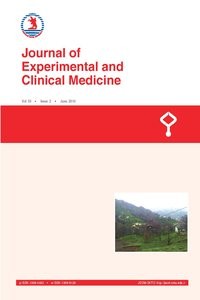Abstract
In our study, the increase in visual acuity of monocular patients in the early period following cataract surgery with phacoemulsification (PHACO), the reasons for being monocular and the comorbid pathologies in the operated eye were examined. The files of 24 patients who had PHACO and intraocular lens (IOL) implantation were analyzed retrospectively. The patients who have 0.1 and worse best-corrected visual acuity (BCVA) in the other eye with Snellen chart and whose vision could not be increased by a medical or surgical treatment were accepted as monocular. All operations were performed with clear corneal incision and standard PHACO methods. IOLs were implanted into capsular bag for all patients. The postoperative visits were made on the 1st, 7th and 30th days. The mean age of the 24 patients included in the study was 65.0±14.1. Seven (29.1%) patients were female, while 17 (70.9%) were male. Right eyes of 4 (16.6%) patients and left eyes of 20 (83.4%) patients were operated. Comorbid disease was found in 16 (66.6%) of the eyes operated. When non-operated eyes of the cases were analyzed, the first three reasons for being monocular were age related macula degeneration (AMD), phthisis bulbi following penetrating injury and glaucomatous optic atrophy. The mean BCVA was 1.31±0.71 logMAR before the surgery, 0.32±0.57 logMAR on the 7th day control and 0.14±0.16 logMAR on the first month control. 22 (91.1%) patients had better visual acuity after the surgery and on first month control 18 (75%) patients’ BCVA was equal to or better than 0.3 logMAR. No complication was seen in the 30 day followup of our cases.
Details
| Journal Section | Surgery Medical Sciences |
|---|---|
| Authors | |
| Publication Date | June 16, 2016 |
| Submission Date | December 9, 2015 |
| Published in Issue | Year 2016 Volume: 33 Issue: 2 |
Cite

This work is licensed under a Creative Commons Attribution-NonCommercial 4.0 International License.


